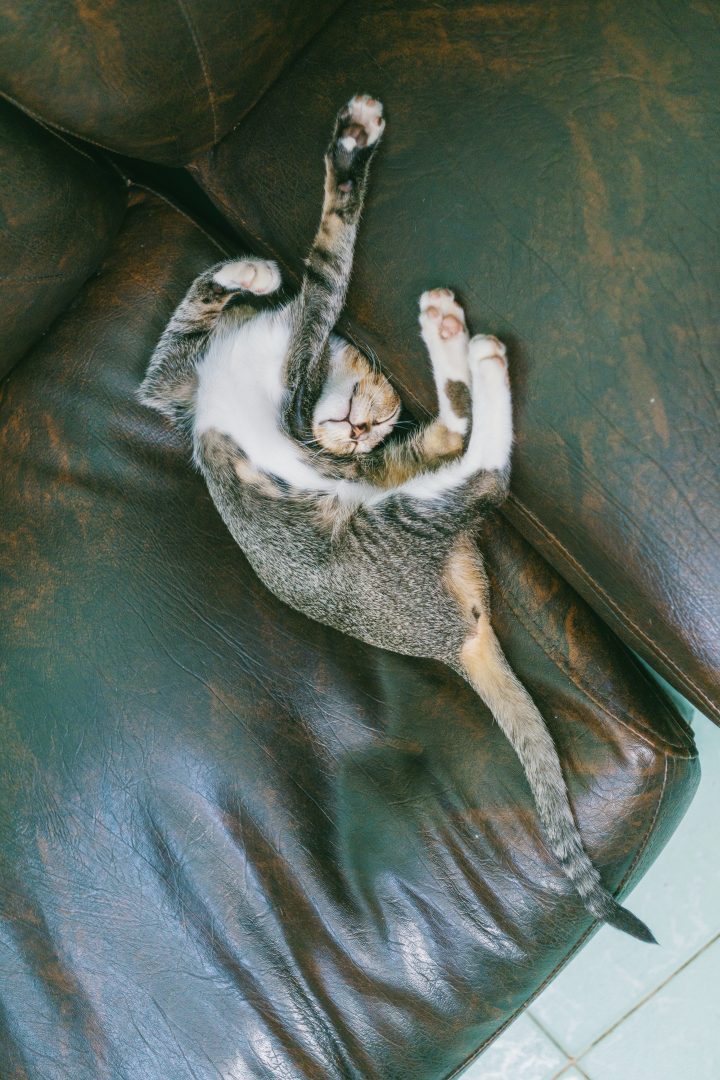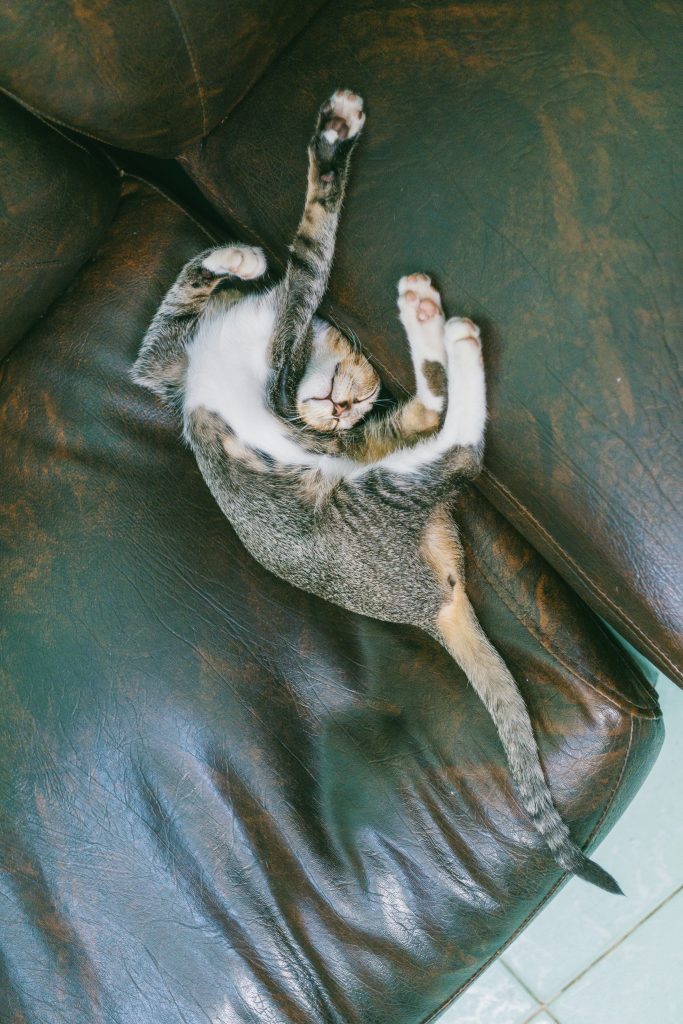

Not only have I been an avid dog lover for most of my life, I would even go so far as to say that at times, I could have qualified as a cat hater by some standards. I didn’t understand why so many people would prefer to keep pets that were harder to train, more aloof, less friendly, and veritably moodier than dogs. I didn’t get cats. I didn’t understand how some were “outdoor,” or how “orange” could be considered a breed. I didn’t understand why they didn’t need baths. I was absolutely mystified—and a little fearful—of litter boxes.
I never did a 360 faster than in the months following the pandemic, when travel reopened. I spent a week crashing with a friend in San Francisco, California and another in London, UK. Both had cats that I immediately fell in love with, despite my initial aversion. I came home smitten with the cats that I had snuggled with during my adventures and fawned over the photos my friends continued to send after I left; “Cats With Strange Auras” became my favourite Twitter account. I was a convert—a verified cat fan.
Yet if you had told me I’d be getting a cat during law school, I would have laughed. My family has two dogs that I love, one of which has grown up with me since I was thirteen. During the pandemic, I had hoped to adopt my own, but I think it was genuinely easier to write the LSAT than it was to find an adoptable dog during 2020. Anywhere that wasn’t a puppy mill had a years-long waitlist, and one Havanese breeder personally typed me a 2000-word essay about how looking for a dog during the pandemic was irresponsible and unethical.
Looking back, he might have had a point. I gave up my search for a dog not long after that, turning my attention towards Chloe Ting workout videos and the new Animal Crossing video game, like countless other people were already doing during that time. But though my search for a four-legged companion had been unsuccessful, the opposite was true for many others.
The term “pandemic pet” is now a mainstream term, often used to denote an animal—typically a dog or cat—that was acquired during the pet boom that began almost as soon as the first COVID-19 lockdown did. Social isolation, work from home, and the widespread loneliness and boredom that marked the pandemic all made for a problem that many believed a pet would fix. A dog or a cat meant companionship and stress relief in a world that desperately needed it; adopting a new puppy joined the ranks of COVID hobbies, right next to trying whipped coffee recipes and baking sourdough bread.
I can’t pretend that I was above it all; it was still a phenomenon that I had tried—and failed—to be a part of for a day or two. I witnessed firsthand how coveted dogs were during this time. I hadn’t thought much of the bad then, and neither had most people—shelters were emptied out, or had waitlists, or could now screen for better owners than before. Many thought it was a great thing that people were largely at home, staying safe, and were simultaneously providing for their newly adopted animals, putting in the time and attention they needed. This story was a “feel good” headline we all loved to see during the pandemic, one that was commonly run in the news.
But it’s only recently that we’ve come to address the fleetingness connoted with the term “pandemic pet.” As the world slowly opened up and people returned to the office, destructive behaviours arose out of pets accustomed to owners who were once at home 24/7. Separation anxiety and poor socialization are now recognized as widespread issues amongst animals adopted during this time. As the cost of living rose, inflation increased the financial pressures of keeping pets—ones that owners were suddenly able to spend significantly less time and energy with than before.
The result is shelters now inundated with surrendered animals. The “feel good” stories that news outlets once ran during the pandemic have been reversed, replaced with a steady stream of articles reporting more and more shelters reaching overcapacity. Last month, I adopted Soup, a two-year old cat that had already been rehomed once prior. She is my post-pandemic pet, and I feel incredibly lucky to have her. Stacking her cans of wet food onto the checkout counter at PetSmart this past weekend, the cashier tells me that they had to euthanize a cat that appeared on their doorstep that morning—there were simply too many pets being dropped off at their storefront.
Although my new status as a cat owner still comes as a surprise to family and friends, a sense of overprotectiveness washes over me as I stroke Soup’s downy-soft fur. Coming out on the other side of the COVID-19 lockdowns, the term “pandemic pet” has now been equated somewhat with “midlife crisis sports car.” But I feel a pang of regret that as the rest of us return to normalcy, for our four-legged friends, the worst of the pandemic is only being felt now.
With articling looming in less than a year, Soup has proven to be the perfect pet—an adult cat that’s been litter trained and is happy to snooze the evening away in my lap as I write this article. Even with decades of experience under my belt caring for my family’s dogs, a spacious two-bedroom apartment, and half my classes recorded on Zoom, I can’t imagine there was a time that I thought an energetic dog would have been my ideal fit. I’m afraid to think of whether I too would have felt the reverberations of raising a pandemic pet, had my initial search for a dog been successful. As we move into the post-pandemic pet phase, I hope that many more dogs and cats like Soup are able to find owners whom they are the right companions for, and that this chapter teaches us to put a more humane, animal-first perspective to viewing pet ownership.
